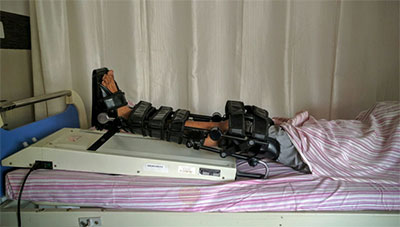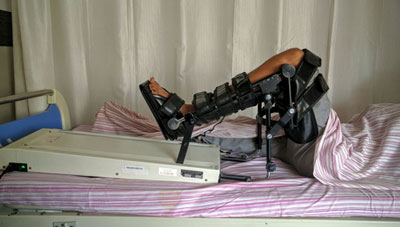Use of CPM (Continuous Passive Motion) device for Rehabilitation after Knee Surgery

Adequate and intensive Rehabilitation is an important step for successful Ligament Reconstruction surgeries and Total Knee Replacement. The primary stage of early rehabilitation is ambulation or mild activity of patients and regaining range of motion in the knee. Continuous Passive Motion (CPM) properly applied during the first two stages of stiffness acts to pump blood and edema fluid away from the joint and periarticular tissues. This allows maintenance of normal periarticular soft tissue compliance. CPM is thus effective in preventing the development of stiffness if full motion is applied immediately following surgery and continued for a period of time until swelling (that limits the full motion of the joint) no longer develops.
After 2nd or 3rd day after surgery, the CPM machine can be a very effective device for improving the range of motion of hip / knee joint. The physical therapist can enhance the functional activities of standing without support, walking and earlier ability to cycle. Therefore CPM machine can improve the Hip flexion and Knee flexion to 120 degrees.

CPM is very important to prevent stiffness and to maintain motion obtained at the time of surgery, particularly following surgeries such as Joint replacement, Synovectomy, Contracture release, Excision of heterotopic ossification, and Fixation of intra-articular fractures. This is particularly true for joints that were stiff before surgery. CPM is not recommended if the soft tissue constraints (ligaments) are insufficient, if the joint is unstable, or if rigid fixation of fractures has not been attained.
By following these guidelines and adhering strictly to the principles of CPM use, the patient can increase the chances of obtaining maximum range of joint motion following trauma or surgery.
Article by Mr. Kandamoorthy BPT, MPT
Senior Physiotherapist, Kauvery Hospital

